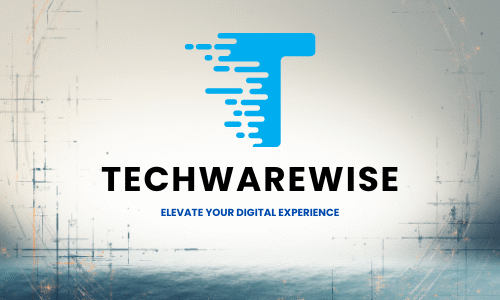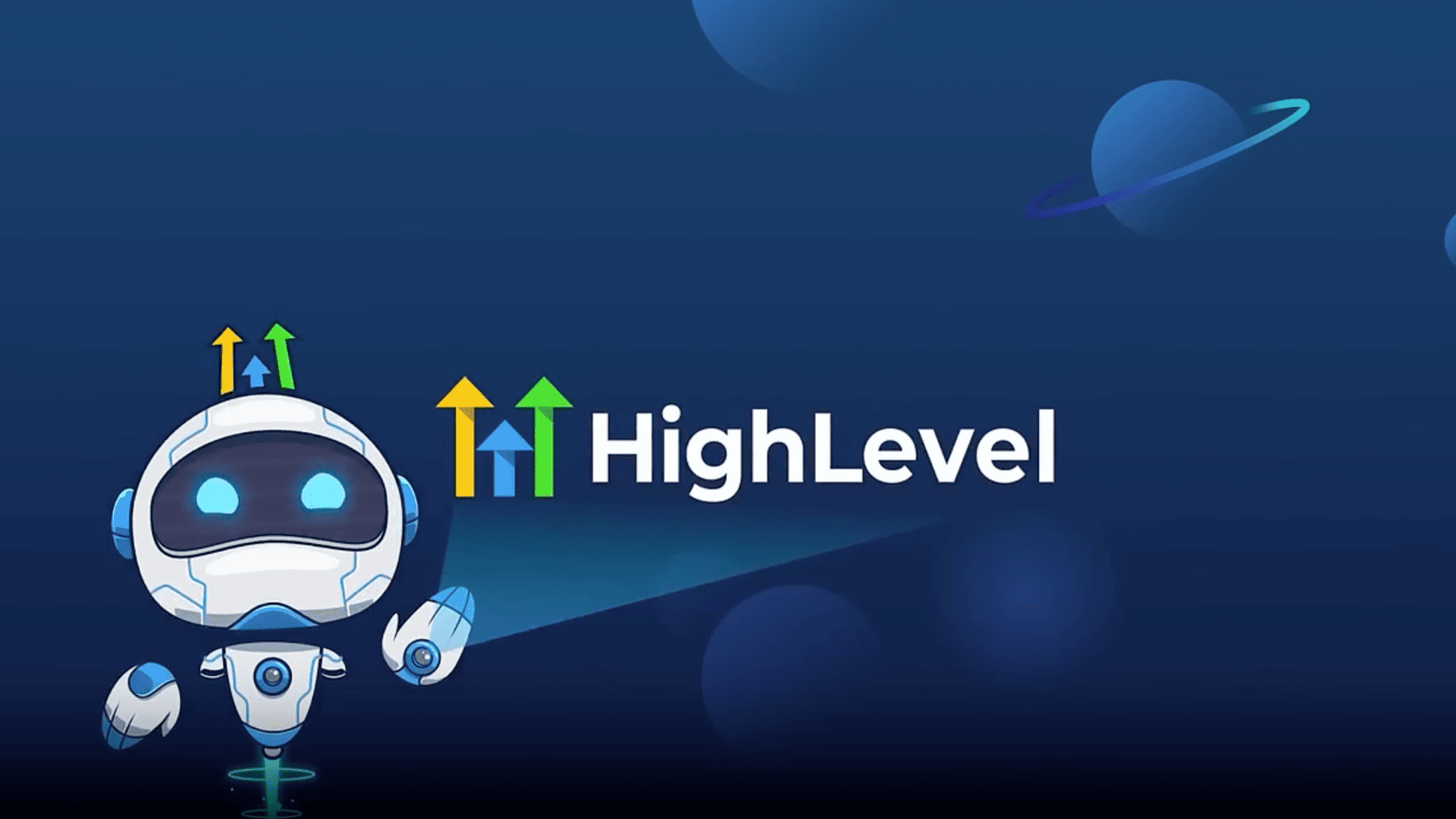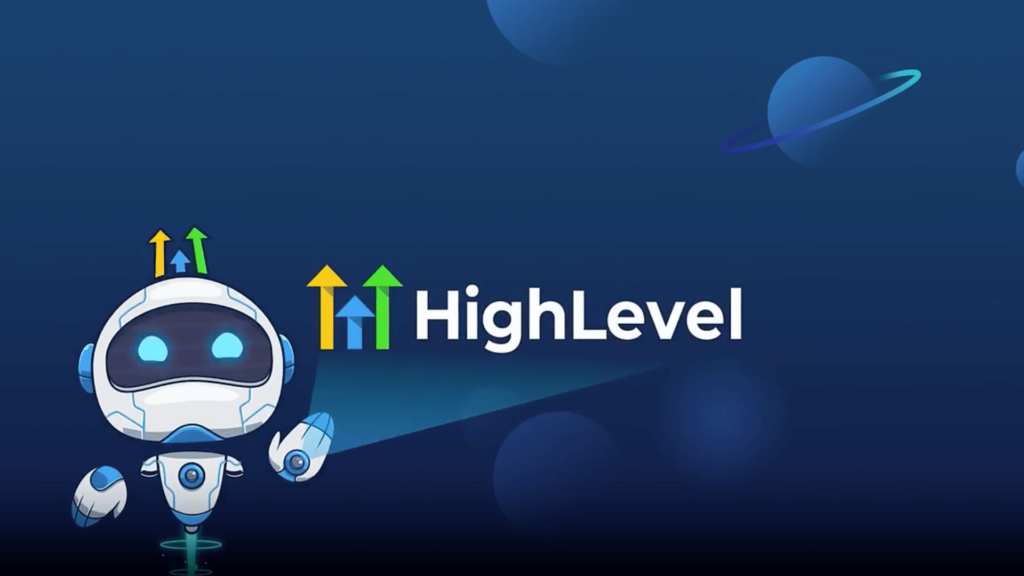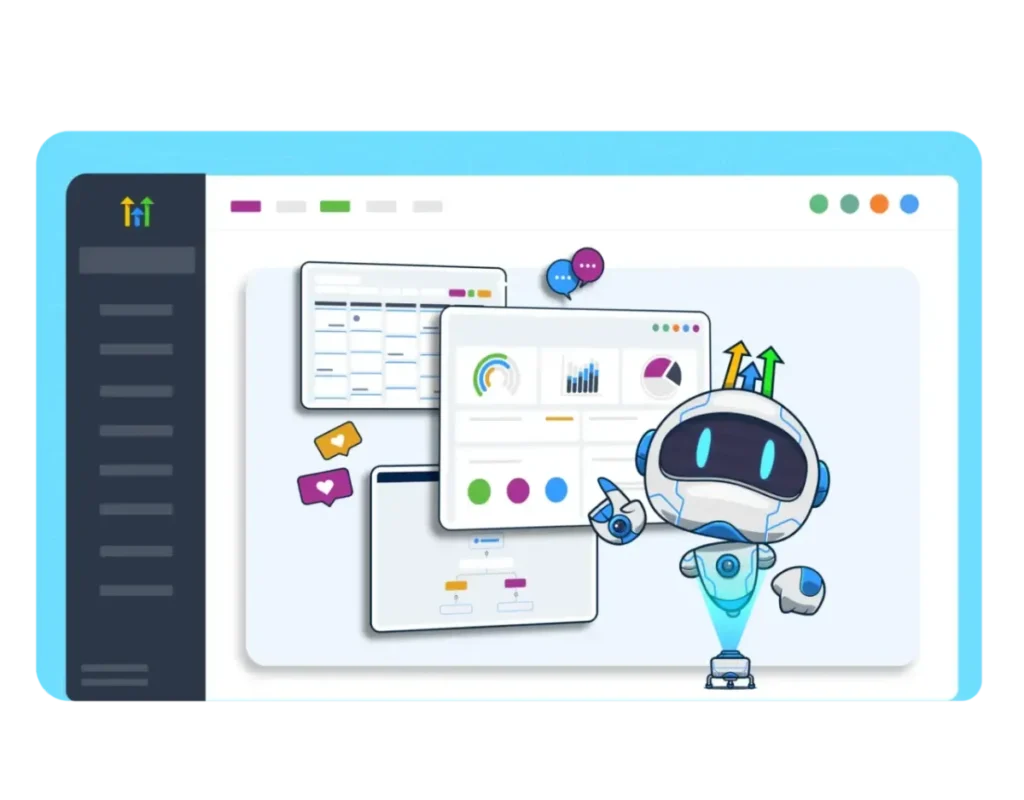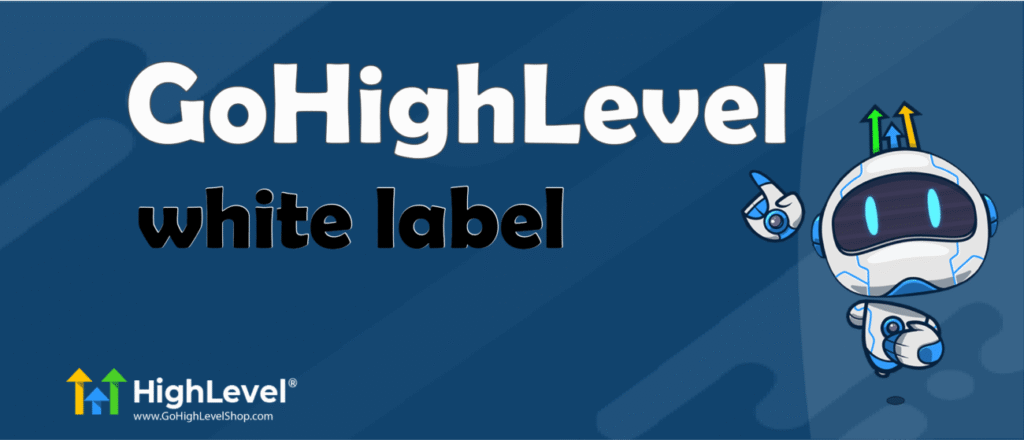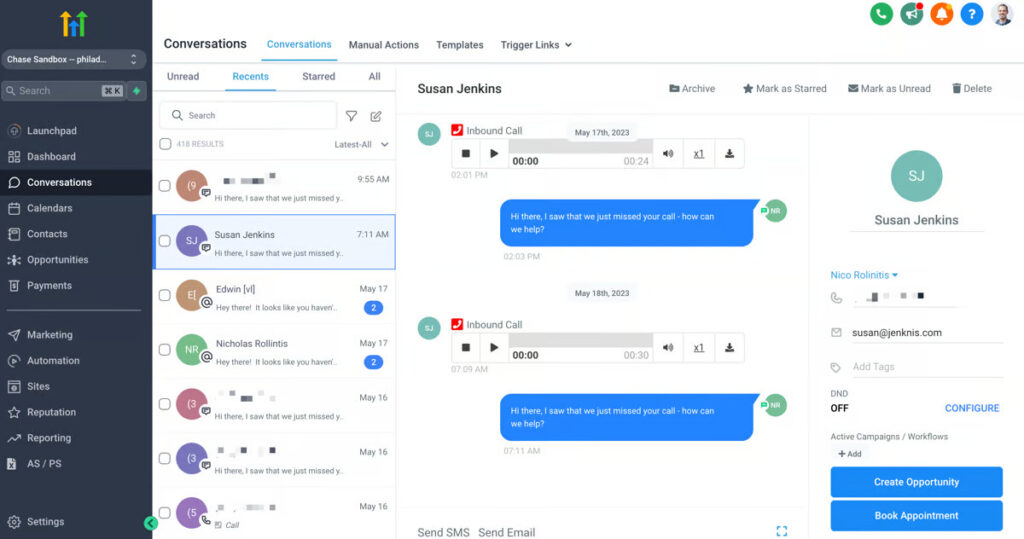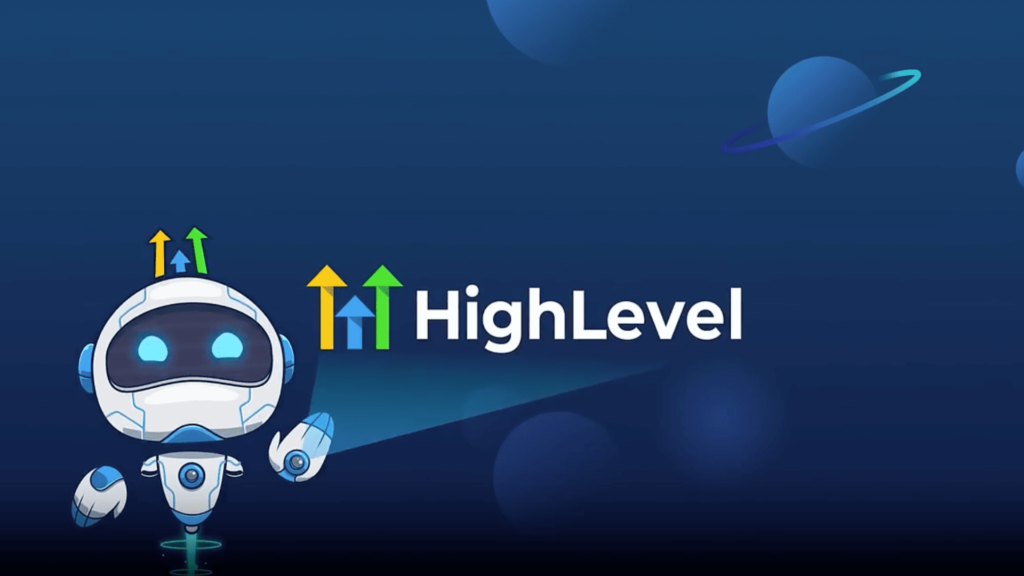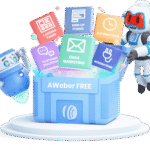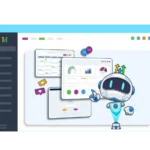Introduction
Running a marketing agency in today’s competitive landscape means constantly balancing multiple challenges: delivering exceptional results, maintaining client relationships, streamlining operations, and differentiating your services—all while keeping costs manageable.
What if I told you there’s a platform specifically designed to solve these exact challenges?
The statistics speak for themselves: agencies using white label solutions report 73% higher client retention rates and 42% higher profit margins compared to those offering standard services alone. In fact, a recent survey of marketing agencies found that those using white-label platforms increased their average client lifetime value by 2.9x!
But what exactly makes GoHighLevel different from the countless other marketing platforms claiming to be the “ultimate solution” for agencies?
In this comprehensive guide, I’ll walk you through everything you need to know about GoHighLevel’s agency-focused features—from its white-label capabilities that let you rebrand the entire platform as your own to its sophisticated client management tools that transform how you deliver results. Whether you’re a solo consultant looking to scale or an established agency seeking to boost profitability, you’ll discover actionable strategies to leverage this powerful platform.
Let’s explore how GoHighLevel can revolutionize your agency business, one white-labeled solution at a time.
Understanding White-Label Solutions for Agencies
Before diving into GoHighLevel’s specific features, let’s clarify what white-labeling means for marketing agencies and why it’s become such a game-changer for the industry.
What is White-Labeling?
White-labeling refers to the practice of removing the original creator’s branding from a product or service and replacing it with your own. In the context of marketing agencies, it means taking a platform like GoHighLevel and presenting it to clients as your proprietary technology.
This goes far beyond simply adding your logo to reports. True white-labeling involves:
- Comprehensive branding customization (logos, colors, fonts)
- Custom domain implementation (app.youragency.com)
- Removal of all original vendor references
- The ability to set your own pricing and terms
- Control over which features are visible to clients
- Branded client-facing materials and resources
White-labeling fundamentally changes how clients perceive your agency. Instead of being seen as a service provider using third-party tools, you position yourself as a technology company with proprietary solutions—instantly elevating your perceived value and justifying premium pricing.
The Evolution of Agency White-Labeling
White-labeling isn’t new to the agency world, but its implementation has evolved dramatically:
First Generation (Pre-2010): Limited to custom-branded reports and presentations
Second Generation (2010-2015): Individual white-labeled tools for specific functions (analytics, social media, etc.)
Third Generation (2016-2020): More comprehensive platforms with basic white-label options, but stills requiring multiple tools
Fourth Generation (2021-Present): All-in-one platforms like GoHighLevel offer complete white-label ecosystems
This evolution has democratized technology ownership. Previously, only large agencies with development teams could create proprietary platforms. Now, even solo consultants can present enterprise-grade technology solutions under their own brand.
The Strategic Advantage of White-Labeling
White-labeling provides several distinct advantages for marketing agencies:
Differentiation in a crowded market: With thousands of marketing agencies competing for clients, white-labeled technology creates a tangible differentiator in your service offering.
Premium pricing potential: Proprietary technology justifies higher rates compared to agencies using standard, recognizable tools that clients could potentially access themselves.
Increased client “stickiness”: When clients are trained on and accustomed to your platform, the switching costs of moving to another agency become significantly higher.
Additional revenue streams: White-labeled platforms open the door to software licensing revenue beyond traditional service fees.
Enhanced professional credibility: Presenting sophisticated technology solutions under your brand elevates your agency’s perceived expertise and capabilities.
According to a 2024 survey by Agency Analytics, 78% of clients reported being more impressed by agencies with proprietary platforms compared to those using standard industry tools.
GoHighLevel’s White-Label Capabilities
GoHighLevel has positioned itself as the industry leader in white-label solutions for marketing agencies. Let’s examine the specific white-label capabilities that set it apart.
Complete Visual Customization
GoHighLevel allows comprehensive branding across the entire platform:
Logo placement: Replace the GoHighLevel logo with your own in all areas of the platform
Color scheme customization: Adjust all interface colors to match your brand palette
Custom fonts: Implement your brand typography throughout the interface
Favicon control: Display your icon in browser tabs for a complete branded experience
CSS customization: Make advanced styling changes for perfect brand alignment
White-label emails: Send all platform communications with your branding, not GoHighLevel’s
The visual customization is so complete that clients have no indication they’re using anything other than your proprietary technology.
Domain Customization Options
GoHighLevel provides multiple options for brand-consistent domains:
Agency dashboard: Host your agency portal at app.youragency.com
Client access: Provide client logins through portal.youragency.com or clients.youragency.com
Forms and widgets: Ensure all customer-facing elements display your domain
Tracking links: Create branded short links for campaigns and tracking
Calendar booking: Maintain brand consistency with calendar.youragency.com for scheduling
This domain control ensures a seamless brand experience across all touchpoints without revealing the underlying GoHighLevel platform.
White-Label Mobile Applications
Perhaps GoHighLevel’s most impressive white-label feature is the ability to create fully branded mobile applications for both you and your clients:
iOS and Android apps: Create custom-branded applications available in both app stores
Agency backend app: Manage all client accounts from your branded mobile interface
Client-facing apps: Provide clients with their own branded mobile experience
Custom app features: Control which functionalities appear in each client’s application
Push notifications: Send branded alerts and updates directly to client devices
App store presence: Establish your brand in the Apple App Store and Google Play Store
This capability is generally available only to agencies on the Pro/SaaS plan ($497/month), but it provides an extraordinary level of brand legitimacy that few competitors can match.
Client Experience Customization
Beyond visual branding, GoHighLevel allows granular control over the client experience:
Role-based permissions: Determine exactly which features each client or team member can access
Custom terminology: Rename platform elements to match your agency’s unique terminology
Navigation customization: Rearrange and rename menu items for an intuitive client experience
Dashboard configuration: Create client-specific views highlighting their most relevant metrics
Custom training materials: Provide branded tutorials and resources for client onboarding
Welcome sequences: Develop automated introduction experiences for new client accounts
This level of customization ensures the platform reflects not just your visual brand but your agency’s unique approach and methodology.
Setting Up Your White-Labeled Agency Platform

Now that we understand GoHighLevel’s white-label capabilities, let’s walk through the practical steps of setting up your branded agency platform.
Choosing the Right Plan for White-Labeling
GoHighLevel offers several plans, but for serious white-labeling, you’ll want to consider:
Agency Unlimited Plan ($297/month):
- Basic white-label capabilities
- Custom domain for desktop application
- Unlimited client sub-accounts
- Full feature access
- Best for agencies focused primarily on service delivery with white-labeled reporting
Agency Pro/SaaS Plan ($497/month):
- Complete white-label capabilities
- Custom mobile applications
- SaaS mode for client billing
- Zapier integration under your brand
- Best for agencies looking to resell the platform as a software solution
Your choice depends on your agency’s business model and how you plan to leverage white-labeling in your offering.
Step-by-Step White-Label Setup Process
Setting up your white-labeled platform typically follows these steps:
1. Account creation and plan selection
- Sign up for GoHighLevel (14-day free trial available)
- Select the appropriate agency plan based on white-label needs
- Complete initial account configuration
2. Domain setup and configuration
- Purchase an appropriate domain (if you don’t already own it)
- Configure DNS settings to point to GoHighLevel servers
- Verify domain ownership within GoHighLevel
- Set up SSL certificate for secure connections
3. Visual branding implementation
- Upload the logo in all required formats/sizes
- Configure primary and secondary brand colors
- Select typography that matches your brand
- Customize interface elements to match brand style
- Create branded email templates
4. Client sub-account configuration
- Determine standard client account structure
- Configure default permissions and access levels
- Create template dashboards for different client types
- Set up white-labeled notification templates
- Establish client onboarding workflow
5. Mobile app setup (Pro/SaaS plan)
- Prepare app store listings and descriptions
- Design app icons and splash screens
- Configure app functionality and navigation
- Submit applications to the Apple App Store and Google Play Store
- Create a process for client app onboarding
6. Documentation and training materials
- Create white-labeled client onboarding guides
- Develop internal team training on platform management
- Prepare client-facing support resources
- Create standard operating procedures for account management
The typical timeline for a complete white-label setup ranges from 2-4 weeks, with the mobile applications often taking the longest due to app store approval processes.
Common White-Label Setup Challenges

Several challenges commonly arise during white-label implementation:
Domain configuration issues: DNS settings can be tricky, and mistakes can lead to security warnings or connection problems.
Branding consistency: Ensuring that all platform elements reflect your brand requires attention to detail across numerous settings.
App store requirements: Apple and Google have strict requirements for app submissions, including privacy policies and content guidelines.
Client migration: Transitioning existing clients to your white-labeled platform requires careful planning to prevent disruption.
Internal adoption: Getting your team comfortable with managing the white-labeled platform often requires structured training.
GoHighLevel provides setup assistance for agencies on higher-tier plans, which can significantly smooth this implementation process.
Client Management with GoHighLevel

White-labeling creates an impressive client-facing presence, but GoHighLevel’s client management capabilities deliver the operational backbone that transforms how agencies handle client relationships.
The Sub-Account Architecture
GoHighLevel’s foundation for client management is its unique account structure:
Agency account: Your master account that houses all client sub-accounts and agency tools
Client sub-accounts (locations): Individual accounts for each client with their own data, campaigns, and configurations
Team members: Users with specific permission levels who can access multiple accounts
Workspaces: Organizational units that can group related clients or projects
This architecture creates a perfect balance between separation and integration, keeping client data completely separate while allowing your team to manage everything from a single dashboard.
Client Onboarding Best Practices
Successful agencies develop systematic client onboarding processes using GoHighLevel:
Welcome automation: Create an automated sequence introducing clients to your platform
Account setup checklist: Develop a standardized procedure for configuring new client accounts
Training schedule: Establish structured training sessions based on client needs and platform access
Data migration process: Create protocols for importing client data from previous systems
Account review timeline: Schedule regular check-ins during the first 30/60/90 days
Success metrics definition: Clearly establish what metrics will define successful implementation
Agencies that implement structured onboarding processes report 64% higher client satisfaction and 47% faster time-to-value compared to those with ad-hoc approaches.
Permission Management and Access Control
GoHighLevel provides granular control over what each user can access and modify:
Role-based permissions: Create standard roles with pre-defined access levels
- Admin: Full control over all account features
- Manager: Access to most features with limited deletion rights
- User: Basic operational access with limited configuration abilities
- Client: Restricted access to specific dashboard elements
Feature-specific permissions: Control access to individual platform capabilities, like:
- Pipeline management
- Email marketing
- SMS campaigns
- Reporting dashboards
- User management
- Billing information
White-label control: Determine which elements of the platform are visible to clients
IP restrictions: Optionally limit access to specific network locations for security
This permission structure allows you to provide clients with exactly the level of access appropriate to their needs and technical capabilities.

Client Communications and Reporting
GoHighLevel’s client management tools include powerful communication features:
Automated reporting: Schedule regular performance reports delivered directly to clients
Comment and annotation: Add context and insights to metrics and campaign results
Two-way chat: Communicate with clients directly within the platform
Notification system: Alert clients to important updates or required actions
Call tracking: Record and transcribe client calls for documentation and training
Video messaging: Create and share screen recordings for training or explanations
These communication tools keep clients engaged with your agency and the platform, reinforcing the value you provide while reducing the need for frequent meetings.
Managing Multiple Clients Efficiently
As your agency grows, GoHighLevel provides several features for scaling client management:
Snapshots: Save complete account configurations to quickly deploy for new clients
Templates library: Create and save campaign templates across email, SMS, workflows, and funnels
Bulk actions: Perform operations across multiple clients simultaneously
Global search: Quickly find information across all client accounts
Activity monitoring: Track client engagement with your platform and campaigns
White-label analytics: Monitor platform usage across all client accounts
These efficiency tools allow agencies to maintain high service quality while significantly increasing their client-to-team-member ratio.
Client Retention Strategies Using GoHighLevel
Beyond basic management, GoHighLevel enables sophisticated client retention approaches:
Success dashboards: Create visual representations of campaign results and ROI
Milestone alerts: Automatically notify clients when important goals are achieved
Regular value reinforcement: Schedule consistent updates highlighting your impact
Expansion opportunity identification: Use analytics to identify additional service needs
Client health scoring: Develop systems to identify at-risk clients before they consider leaving
Renewal automation: Create systematic processes for contract renewals and extensions
Agencies implementing these strategies within GoHighLevel report reducing client churn by 35-60% compared to their previous rates.
Monetizing White-Label Solutions
While operational efficiency is valuable, the most transformative aspect of GoHighLevel’s white-label capabilities is the potential for new revenue models.
Traditional vs. White-Label Agency Revenue Models
Understanding the financial impact requires comparing traditional agency models with white-label approaches:
Traditional Agency Model:
- Project-based or hourly billing
- Service retainers with defined deliverables
- Performance-based fees tied to specific metrics
- Monthly management fees for ongoing services
- Typical margins: 15-30%, depending on service type
White-Label Platform Model:
- Software licensing fees (regardless of service usage)
- Tiered access levels with premium features
- User-based pricing for client team members
- Add-on features for additional revenue
- Platform plus service combinations
- Typical margins: 70-85% on platform fees
This shift from pure service revenue to software-plus-service creates more predictable cash flow with significantly higher margins.
White-Label Pricing Strategies
Successful agencies use several approaches to pricing their white-labeled GoHighLevel platform:
Value-based pricing: Setting prices based on the business impact rather than your costs
- Example: $2,000/month for a comprehensive digital marketing platform with expected ROI of $10,000+
Tiered feature access: Creating good/better/best packages with increasing capabilities
- Example: Basic ($497/mo), Professional ($997/mo), Enterprise ($1,997/mo)
Industry-specific pricing: Adjusting rates based on the client’s industry and potential value
- Example: Higher rates for legal or medical clients compared to retail or restaurants clients
User-based scaling: Charging based on the number of client team members with access
- Example: $199/month base fee plus $49 per additional user
Service bundling: Combining platform access with various service levels
- Example: Platform-only ($997/mo) vs. Platform+Support ($1,497/mo) vs. Platform+Management ($2,997/mo)
The pricing sweet spot typically positions your white-labeled platform at 2-5x GoHighLevel’s direct cost, depending on your target market and added value.
Creating and Positioning Service Packages
Beyond basic pricing, how you package and position your white-labeled platform significantly impacts perceived value:
Solution-oriented naming: Focus on outcomes rather than features
- Instead of “Email Marketing Platform,” use “Customer Engagement Engine.”
- Replace “CRM Access” with “Client Relationship Command Center.”
Industry-specific terminology: Adapt language to resonate with specific verticals
- For healthcare: “Patient Acquisition & Retention System”
- For real estate: “Property Marketing Acceleration Platform”
Results-focused descriptions: Emphasize outcomes over technical capabilities
- Instead of “Email automation tools,” use “Automated prospect nurturing that converts leads while you sleep.”
- Replace “Review management” with “Reputation building that turns satisfied customers into your best marketing asset.”
Competitive differentiation: Position against known alternatives in the market
- “The simplicity of [Popular Tool] with the power of enterprise solutions costing 10x more”
- “Finally, a marketing platform built specifically for [industry] rather than generic businesses”
Effective positioning can justify premium pricing while attracting ideal-fit clients for your agency.
Client Success and Case Studies
Let’s examine how real agencies have monetized GoHighLevel’s white-label capabilities:
Agency A: The Solo Consultant Scale-Up
- Starting point: Solo consultant charging $2,000/month for social media management
- White-label implementation: Created “Social ROI Engine” platform
- New offering: Platform access at $997/month plus optional services
- Result: Scaled to 24 platform clients ($23,928/month) while maintaining 5 full-service clients
- Key insight: Productized service model allowed scaling without proportional team growth
Agency B: The Local Marketing Transformation
- Starting point: Local marketing agency with 15 clients at $1,500/month average
- White-label implementation: Developed “Local Business Growth Suite”
- New offering: Tiered platform pricing from $797-$1,997/month
- Result: Improved retention from 67% to 93% annually while increasing average client value to $2,100/month
- Key insight: Platform stickiness dramatically reduced client churn while enabling price increases
Agency C: The Enterprise Premium Play
- Starting point: Mid-size agency serving larger businesses at $5,000+/month
- White-label implementation: Created industry-specific platforms for key verticals
- New offering: Enterprise platform licensing starting at $2,997/month plus implementation and services
- Result: Doubled profit margins while reducing service delivery costs
- Key insight: Enterprise clients valued the platform’s exclusivity and customization options
What’s noteworthy across these case studies is that white-labeling didn’t just add a new revenue stream—it fundamentally transformed these agencies’ business models and profitability.
White-Label Sales Strategies and Objection Handling
Successfully selling white-label solutions requires specific approaches:
Effective sales strategies:
- Demo-centric presentations showing the platform in action
- ROI calculators demonstrating tangible business impact
- Free trials or “pilot programs” for initial engagement
- Comparison matrices highlighting advantages over alternatives
- Client testimonials and case studies demonstrating results
Common objections and handling approaches:
- “It’s too expensive.” → Focus on ROI and total cost of alternatives
- “We already have tools.” → Emphasize integration and consolidation benefits
- “It looks complicated.” → Showcase onboarding and support processes
- “We don’t need all these features.” → Highlight the most relevant capabilities for their specific challenges
- “We could just sign up for GoHighLevel directly.” → Emphasize your industry expertise, customization, and support value
Agencies that develop systematic approaches to these objections report 40-60% higher close rates on their white-label offerings.
Advanced Client Management Strategies
Beyond basic client management, GoHighLevel enables sophisticated approaches that can transform client relationships and outcomes.
Creating Client Success Playbooks
Leading agencies develop systematic playbooks for client success:
Standardized implementation sequences:
- Account setup and configuration
- Team onboarding and training
- Initial campaign development
- Launch and monitoring
- Optimization and scaling
Industry-specific playbooks:
- Healthcare provider acquisition strategy
- Real estate listing generation
- Restaurant customer frequency campaigns
- Service business appointment booking
Results-focused workflows:
- 90-day Google Business Profile optimization
- Email list growth and engagement sequence
- Review generation and reputation management
- Lead nurturing and conversion tracking
These playbooks ensure consistent results across clients while reducing the expertise required from team members.
Client Health Monitoring Systems
Sophisticated agencies build early warning systems for client relationship issues:
Engagement metrics tracking:
- Platform login frequency
- Report viewing activity
- Communication response times
- Feature utilization rates
Performance indicators:
- Campaign result trends
- Key metric movements
- Comparison to benchmarks
- Progress toward defined goals
Relationship signals:
- Meeting attendance and engagement
- Responsiveness to communications
- Feedback sentiment analysis
- Expansion discussions
By monitoring these indicators, agencies can proactively address potential issues before they lead to client churn.
Scaling Client Management Teams
As agencies grow, GoHighLevel facilitates efficient team scaling:
Specialized roles development:
- Platform specialists focused on technical implementation
- Campaign managers handling ongoing optimization
- Successful managers maintain client relationships
- Onboarding specialists focused on new client setup
Process documentation:
- Step-by-step guides for common tasks
- Troubleshooting flowcharts for issue resolution
- Decision trees for campaign optimization
- Client communication templates
Team analytics:
- Performance metrics by team member
- Time allocation tracking
- Client satisfaction scoring
- Outcome achievement rates
This structured approach allows agencies to maintain service quality while significantly increasing their client capacity.
Client Education and Training Systems
Client understanding and adoption dramatically impact platform success:
Multi-format training resources:
- Written documentation with screenshots
- Video tutorials for visual learners
- Live training sessions for interactive learning
- Hands-on workshops for practical application
Progressive education paths:
- Beginner essentials for immediate needs
- Intermediate capabilities for regular users
- Advanced features for power users
- Administrator training for client team leaders
Engagement incentives:
- Certification programs for client teams
- Recognition for platform champions
- Usage competitions with rewards
- Success spotlights for active users
Agencies that invest in client education report 57% higher platform adoption rates and 32% lower support requirements.
Client Expansion and Growth Strategies
GoHighLevel provides data-driven opportunities for client growth:
Service gap analysis:
- Unused platform features with high potential value
- Performance metrics indicating opportunity areas
- Competitive benchmarking showing potential improvements
- Attribution modeling reveals high-value channels
Strategic account planning:
- Quarterly business reviews with expansion roadmaps
- Success-based upsell sequences
- Cross-selling based on platform usage patterns
- Partner integration opportunities
Value reinforcement:
- ROI tracking and visualization
- Before-and-after comparisons
- Competitive gain documentation
- Growth trajectory modeling
These structured approaches transform expansion from opportunistic selling to strategic business development.
Integrating White-Label Solutions with Agency Services

The most successful implementations tightly integrate white-label platforms with core agency services.
Service-Platform Alignment Strategies
Aligning your service offerings with platform capabilities creates powerful synergies:
Platform-enhanced services:
- Strategy development informed by platform analytics
- Creative production guided by performance data
- Media buying is optimized through conversion tracking
- Content creation informed by engagement metrics
Service-enhanced platform:
- Expert setup and configuration
- Strategic automation development
- Custom reporting and analysis
- Campaign optimization services
Hybrid delivery models:
- Self-service platform with consulting hours
- Managed services with client platform access
- Training and enablement programs
- Co-managed campaign approaches
This integration creates a virtuous cycle where platform usage increases service value, and service expertise enhances platform results.
Client Journey Mapping
Understanding how clients experience your combined platform and services is critical:
Pre-sale experience:
- Initial platform demonstration
- Trial access configuration
- Needs assessment and solution mapping
- Proposal and agreement process
Onboarding journey:
- Welcome and introduction sequence
- Initial account setup and configuration
- Team training and access provisioning
- First campaign launch and results
Ongoing relationship:
- Regular performance reviews
- Strategic planning sessions
- Optimization and fine-tuning
- Growth and expansion discussions
Renewal and expansion:
- Value documentation and presentation
- Service level adjustments based on needs
- New capability introductions
- Long-term strategy alignment
Mapping these journeys enables consistent experiences that build client confidence and satisfaction.
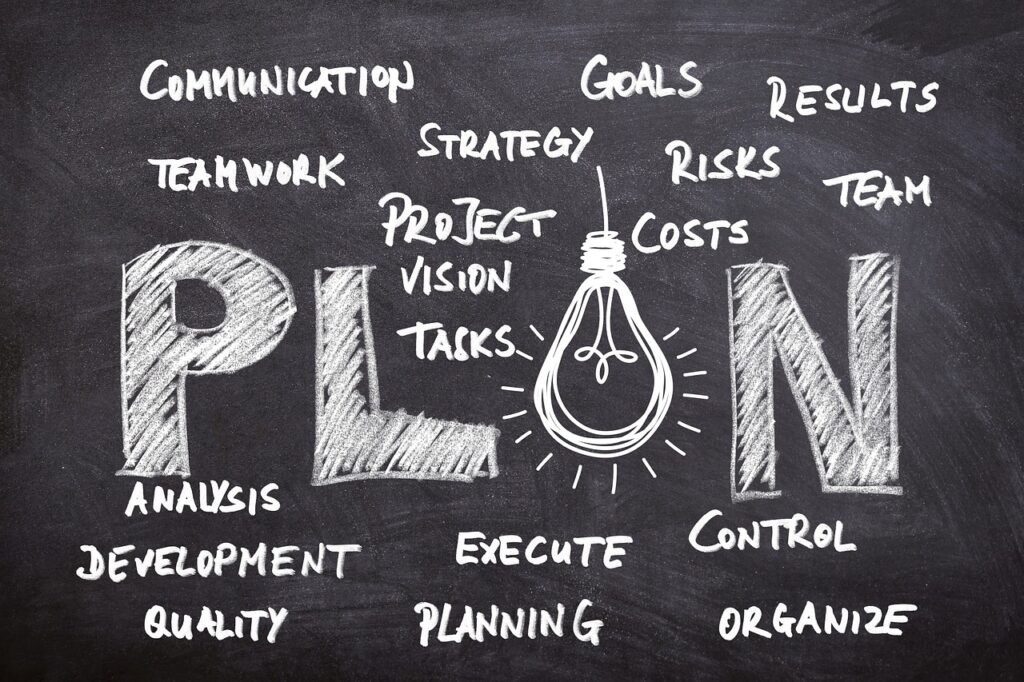
Team Structure for White-Label Agencies
Successful white-label agencies often adopt specialized team structures:
Client success team:
- Relationship management
- Strategic guidance
- Results reporting and analysis
- Expansion and renewal management
Platform operations team:
- Technical implementation
- Campaign execution
- Automation development
- Data management and integration
Platform development team:
- Custom feature development
- Integration building
- Template creation
- Snapshot development
Training and enablement team:
- Client education development
- Training delivery
- Support system management
- Knowledge base maintenance
This specialization allows team members to develop deep expertise in specific areas rather than requiring everyone to master all aspects of client service.
Measuring White-Label Program Success
Comprehensive metrics tracking is essential for optimizing your white-label program:
Financial metrics:
- Monthly recurring revenue (MRR) from the platform
- Average revenue per client (ARPC)
- Customer acquisition cost (CAC)
- Customer lifetime value (CLTV)
- Profit margin by service type
Client success metrics:
- Retention rate by client type
- Platform adoption percentage
- Feature utilization rates
- Support ticket volume and resolution time
- NPS or satisfaction scoring
Operational metrics:
- Client-to-team-member ratio
- Onboarding completion time
- Campaign implementation timeline
- Issue resolution speed
- Time spent on manual tasks
Regular analysis of these metrics enables continuous improvement of your white-label program.
Common Pitfalls and Success Factors
Learning from others’ experiences can accelerate your success:
Common pitfalls:
- Over-promising platform capabilities beyond what’s realistically deliverable
- Insufficient client training leading to low adoption and perceived value
- Inadequate internal expertise for platform management
- Pricing is too low to support the necessary service and support
- Competing with yourself by offering services separately from the platform
Critical success factors:
- Strong technical implementation capabilities
- Clear value articulation focused on outcomes
- Excellent client onboarding and education processes
- Appropriate pricing that reflects delivered value
- Strategic integration of platform and services
- Continuous innovation and feature development
Understanding these factors allows you to build on others’ successes while avoiding their mistakes.
The Future of White-Label Agency Solutions

As the agency landscape continues to evolve, several trends are shaping the future of white-label solutions.
Emerging Trends in White-Label Technology
Keep an eye on these developing trends:
AI integration: Artificial intelligence capabilities are increasingly being embedded in white-label platforms, allowing agencies to offer sophisticated automation and predictive analytics.
Vertical specialization: Platforms are developing deeper functionality for specific industries, enabling more tailored solutions for niche markets.
Ecosystem development: White-label platforms are expanding beyond core functionality to include app marketplaces and developer tools for customization.
Integrated commerce: Direct selling capabilities are becoming standard in white-label platforms, blurring the lines between marketing and e-commerce.
Data interoperability: Enhanced API capabilities are enabling better data sharing between platforms and specialized tools.
These trends will continue to expand the capabilities and value of white-label agency solutions.
Preparing Your Agency for Long-Term Success
Building a sustainable white-label program requires forward-thinking preparation:
Continuous education: Stay updated on platform capabilities and best practices through ongoing learning.
Community engagement: Participate in GoHighLevel user communities to share ideas and solutions.
Specialist development: Build or hire specialized expertise in key platform capabilities.
Client feedback loops: Create systematic processes for gathering and implementing client input.
Competitive monitoring: Stay aware of alternative platforms and their evolving capabilities.
Innovation investment: Allocate resources for developing unique approaches and customizations.
Agencies that embrace these strategies will be best positioned to grow and adapt as the white-label landscape evolves.
Conclusion
GoHighLevel’s white-label solutions and client management capabilities represent a transformative opportunity for marketing agencies. By combining comprehensive branding capabilities with powerful operational tools, the platform enables a fundamental shift in how agencies position themselves, deliver services, and create value.
The most successful agencies don’t just see GoHighLevel as another tool—they leverage it as the foundation for a reimagined business model with higher margins, stronger client relationships, and greater scalability.
Is white-labeling right for every agency? Not necessarily. It requires investment in implementation, team training, and ongoing management. But for agencies looking to differentiate themselves, improve client retention, and create new revenue streams, GoHighLevel’s white-label capabilities provide an unparalleled opportunity.
The question isn’t whether your clients need marketing technology—they unquestionably do. The real question is whether they’ll get it from you, as a valuable part of your comprehensive solution, or from someone else who recognized the opportunity first.
Are you ready to transform your agency with white-label solutions? The tools are available, the strategies are proven, and the potential is waiting to be unlocked.
Index
- Introduction
- Understanding White-Label Solutions for Agencies
- What is White-Labeling?
- The Evolution of Agency White-Labeling
- The Strategic Advantage of White-Labeling
- GoHighLevel’s White-Label Capabilities
- Complete Visual Customization
- Domain Customization Options
- White-Label Mobile Applications
- Client Experience Customization
- Setting Up Your White-Labeled Agency Platform
- Choosing the Right Plan for White-Labeling
- Step-by-Step White-Label Setup Process
- Common White-Label Setup Challenges
- Client Management with GoHighLevel
- The Sub-Account Architecture
- Client Onboarding Best Practices
- Permission Management and Access Control
- Client Communications and Reporting
- Managing Multiple Clients Efficiently
- Client Retention Strategies Using GoHighLevel
- Monetizing White-Label Solutions
- Traditional vs. White-Label Agency Revenue Models
- White-Label Pricing Strategies
- Creating and Positioning Service Packages
- Client Success and Case Studies
- White-Label Sales Strategies and Objection Handling
- Advanced Client Management Strategies
- Creating Client Success Playbooks
- Client Health Monitoring Systems
- Scaling Client Management Teams
- Client Education and Training Systems
- Client Expansion and Growth Strategies
- Integrating White-Label Solutions with Agency Services
- Service-Platform Alignment Strategies
- Client Journey Mapping
- Team Structure for White-Label Agencies
- Measuring White-Label Program Success
- Common Pitfalls and Success Factors
- The Future of White-Label Agency Solutions
- Emerging Trends in White-Label Technology
- Preparing Your Agency for Long-Term Success
- Conclusion
Affiliate Disclosure
This website/blog/content contains affiliate links. This means if you click on one of these links and make a purchase, I may receive a small commission at no additional cost to you.
I only recommend products and services that I genuinely believe in and have personally used or thoroughly researched. While I do receive compensation for these recommendations, my opinions remain honest and unbiased.
The commissions earned help support this website and allow me to continue providing valuable content. I appreciate your support when you use these links, but you are never obligated to make purchases through them.
Please note that prices of products or services may vary, and I have no control over these prices or the availability of items. All recommendations are made based on my assessment at the time of posting.
Thank you for your understanding and support.
